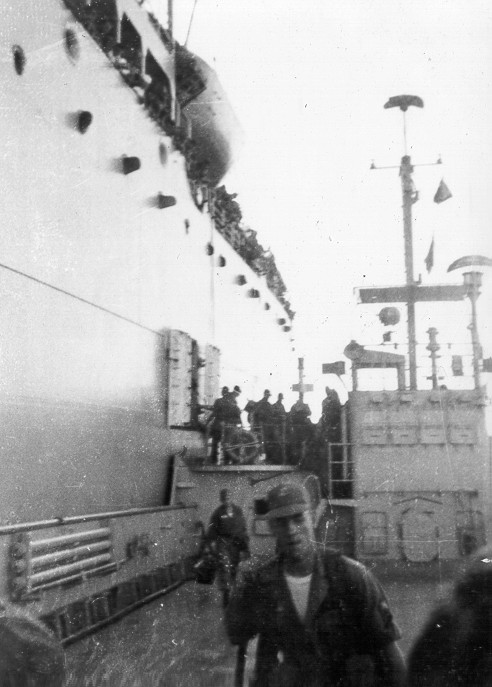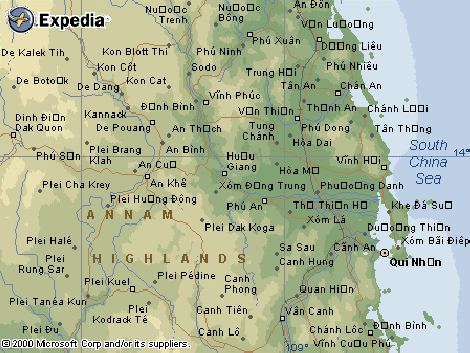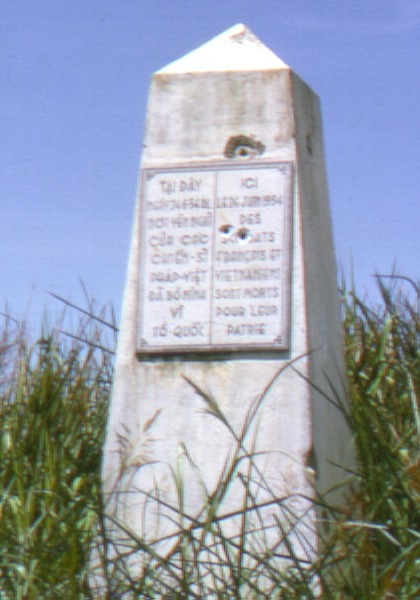
Hugh Savage's Memories
Page 1 of 5

This was written for my children who may not be familiar with some of the terms
and equipment that were so familiar to us. Hope it brings back good memories,
Hugh Savage
b) Vietnam
i) Leaving home
I spent the first year of active duty at Fort Campbell, KY, home of the 101st Airborne
Division. In the spring of 1965 they received orders to ship out to Viet Nam. During the
few months I had been at Fort Campbell I had seen Special Forces types and other
infantry officers at the O’Club wearing their unit patches on their right shoulder, the
privilege of those who have served in a combat zone, and I had envied them slightly.
After all, the stated objective of all our training was to prepare us for combat. And Viet
Nam was the only combat assignment available at the time. It was reputed to be “a lousy
war, but the only one we had.” So there was a buzz of excitement when the 101st actually
got orders to go there. The 937th Engineer Group was tasked to use their heavy
equipment to help the 101st load their gear onto railroad cars for movement to the west
coast.
And then a few weeks later it was our turn. The 937th Engineer Group consisted of 3
Combat Engineer Battalions, a Panel Bridge Company, a Float Bridge Company, a Dump
Truck Company and some other small units I have forgotten. Even though the total
number of men and officers in the Group was over 1,000, I had been there long enough to
feel like I knew most of them. I was transferred out of the 27th Engineer Battalion to help
bring the 70th Engineer Battalion up to full strength. Other officers and men came from
the 39th Engineer Battalion.
I was given a few days leave before we embarked. As my parents and my girlfriend
drove me to the airport to return to Fort Campbell my mother was very quiet. My
girlfriend told me later that Mom was sure I would be killed. I do not remember being
especially concerned; the optimism of youth. Back at Fort Campbell Ron Cotten, Larry
Hallstom and I moved out of our house and temporarily into another that had just been
vacated by 101st Division officers who left for Viet Nam. Larry was also on orders to go
to Viet Nam. While Larry and I were packing our gear and watching the news on TV we
saw a segment on how bad things were on Route 19 in Viet Nam. I made a mental note
not to go there if I had a choice. I had recently read Bernard Fall’s book “Street Without
Joy” which chronicled the French war in Indochina. Much of the action took place on
Route 19, most notably the destruction of Groupment Mobile 100, a modern armored unit
destroyed by peasant soldiers. We had no idea of where we were going. Only that we
were going to Viet Nam. Just before we left I learned that the 101st Airborne officer who
had occupied my room immediately before me had been killed shortly after arriving in
Viet Nam. It was a sobering realization that the danger was real.
The morning of Tuesday, 3 August 1966 we marched out to the airport at Fort Campbell
to board the Super Constellation that would take us west to Oakland where we would
board our ship, The General Mann. The Post Commander, General Powell, was there to
see us off. As I passed him he asked me if I was ready to go and I replied with a hearty
“Yes Sir!” And I meant it. I was young. I was single. I had never been out of the
United States. I was ready for an adventure.
ii) Troop Ship “The General Mann”
As an officer I shared a small cabin near the bow with 1LT Jock Fink who was in the
937th Group S-3 (Operations Section). He was older than me, married with a couple of
children. He had about 6 months to go before his two years of active duty was complete
and he could return to civilian life. He was decidedly less excited than I and worried
about his chances of getting home. (I saw him in Qui Nhon just before he went home.
As it turned out he passed a busy, but relatively safe, six months.)
On the afternoon of 5 August 1966 we set sail serenaded from the dock by the 2nd Army
Band. I will never forget sailing past San Francisco and under the Golden Gate Bridge.
It was a spectacular way to leave the USA. Nor will I forget the weather we encountered
shortly thereafter. It became cold and overcast with large steady swells that rocked the
ship continuously. I was enrolled in a correspondence course and thought I would take
advantage of the free time on the cruise to complete some lessons. I may have lasted half
an hour before motion sickness forced me topside. Fortunately for me I recovered
quickly and was not again affected by seasickness.
Not everyone was so lucky. One of my additional duties on board ship was troop
compartment commander. In addition to men from HQ Co of the 70th the compartment
contained men from the 31st Ordnance Company, the 697th Engineering Company (Pipe
Line) and the 624th Quarter Master Company. Many were actively sick. In spite of
attempts to clean up quickly, the persistent and lingering odor made others sick too.
Consequently, the compartment a miserable place to be.
As we sailed the weather either improved or we got used to the motion or some of both.
The days became warm and sunny. I spent hours looking at the sea and sky. The water
of the Pacific Ocean was the color of chipped chrome blue glass according to my journal.
We saw several albatross, a good omen. Flying fish were occasionally seen skittering
away from the boat’s bow. If we stayed on schedule, we might miss Friday the 13th
altogether because of the International Date Line. Each morning in the Officer’s Mess
our Filipino steward would offer us “Eggs starter”. It took us awhile to realize he was
offering us “Eggs to order”. The days were leisurely, almost pleasant. I was on a “Slow
Boat to (Indo)China” with attractive nurses from the hospital outfit at our table at every
meal. I did a lot of reading, played tetherball and went to the movies in the evening. But
reality was getting closer every day. I took the PT (Physical Training) pretty seriously
and ran laps around the deck for I was not completely unconcerned about my safety and I
wanted to be sure I was in good enough shape to outrun the VC.
With time on our hands and the real possibility that some of us might not return I was
prompted to do some serious thinking. Though my college major was engineering, I had
been considering going to seminary to become an Episcopal clergyman. I planned to use
my two years in the Army to make up my mind. One evening I sought out our Battalion
Chaplain, Captain Hutchins, to discuss my decision with him. He was one of the most
impressive officers of any branch I have ever known. Most Chaplains I met were mild
mannered men happy to stay in the background. Not so for Captain Hutchins. A former
enlisted man, he was the only Ranger Airborne Chaplain I ever met. Ranger school was
notoriously difficult and only the fittest and the most mentally disciplined succeed. An
Officer could not hope to rise above Major without his Ranger tab. You only get one
chance and many wash out. In the course of our discussion I realized I probably should
not become a clergyman; a decision that I believe time has proven correct. A few months
after we arrived in-country Captain Hutchins transferred to an airborne infantry outfit.
Shortly after I was not really surprised to read in Time Magazine that he had earned a
Silver Star for his heroic actions while with the infantry.

Disembarking The General Mann

